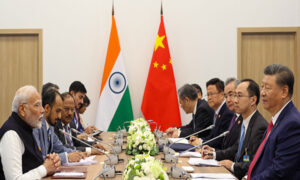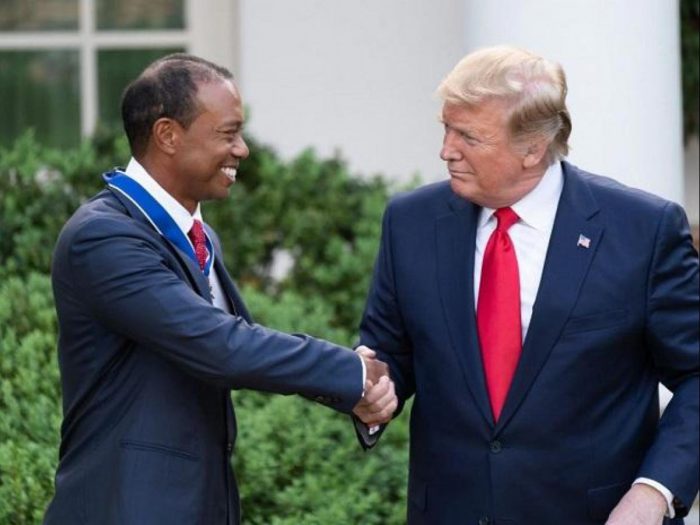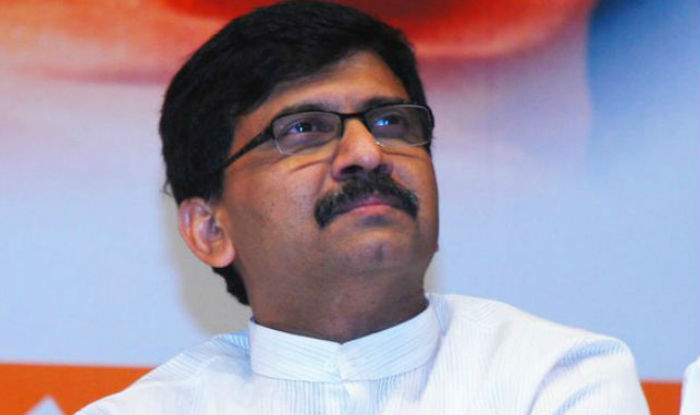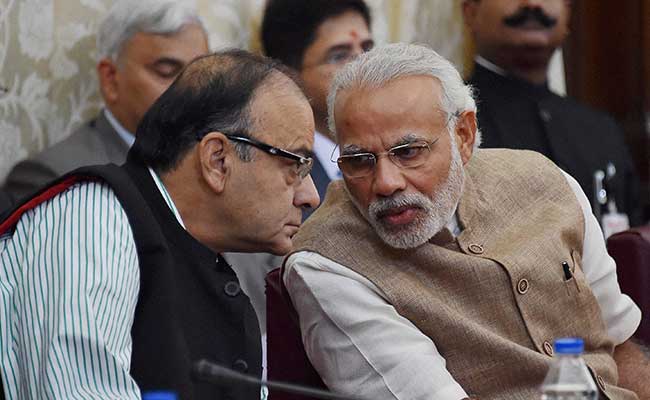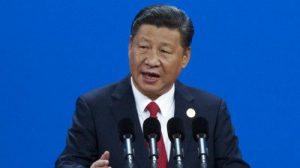
File Picture Courtesy : The Asian Age
Recently, Emmanuel Macron, French President visited China where he signed several business deals with China but warned against pillaging as reported by the international news media. With fading glory of Angela Merkel, Emmanuel Macron is emerging a prominent leader in the European world. European Union (EU) is a leading trading partner of China. Brexit created a favourable situation to express his concerns on a set of global issues like climate change and political intervention in a couple of West Asian Nations. His recent visit in China was lauded by the state-owned media in China.
Before delving into the detail, there is a need to focus on the literal meaning of pillaging and its derivation. As dictionaries roughly defines, pillage as plunder which was was used originally in French and crept into English. In this backdrop, Impact News is trying to trace trail of the pillaging investment by China in several continents. With help from the credible and extensive studies, we are showing that how China infused a huge money in structurally weak, vulnerable and small economies in the last one decade.
Chinese investment in Africa’s structurally weak, vulnerable and small economies has increased exponentially. In very short time span, China has emerged as a leading trading partner of Africa. According to the Economist, the total stock of Chinese investments in Africa grew twenty-fold. It’s evident that the Chinese companies are extracting huge natural resources from this contentment. Its meddling with the domestic affairs is increasing day by the day.
Recently, the UNCTAD released the World Investment Report 2017. It listed top ten countries which invested in the Least Developed Countries. China is dominating the pie (See the Exhibits: I & II). Another category is investment in the Landlocked Developing Countries. As the following exhibits (III & IV) showed that Chinese investment has increased substantially where other major countries are trailing.
Exhibit: I
FDI Flows in Least Developed Countries: Top 5 Host Economies, 2016
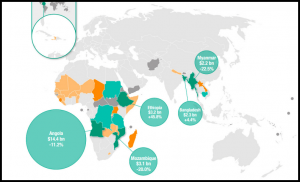
Source: World Investment Report 2017 , UNCTAD
Exhibit: II
Top 10 Investor Economies by FDI Stock in Least Developed Countries
(2010 and 2015)
Billions of Dollars
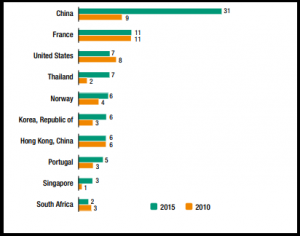
Source: World Investment Report 2017 , UNCTAD
Exhibit: III
FDI Flow in Landlocked Developing Countries:
Top 5 Host Economies, 2016
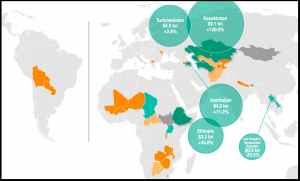
Source: World Investment Report 2017 , UNCTAD
Exhibit: IV
Top 10 Investor Economies by FDI Stock in Landlocked Developing Countries
(2010 and 2015)
(Billions of dollars)
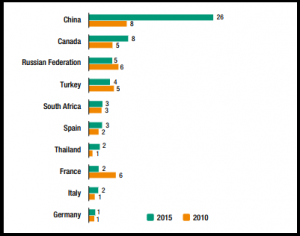
Source: World Investment Report 2017 , UNCTAD
Recent Chinese Entanglement in Australia
Recently, Chinese meddling in Australia was surfaced where a policy maker forced to resign from Senate Positions after the revelation. It was reported that a Chinese businessman was influencing the policy decisions. In a knee jerk response, the Australian Government confirmed that it’s going to introduce a legislation to stop improper foreign influence in the political system of Australia. After such severe allegation, the Chinese authorities denied their involvement in their domestic affairs and they labelled it as fabricated by media while refuting growing influence in Australia.
OBOR: A Chinese Master Plan
In 2013, China unveiled an ambitious initiative which is One Belt One Road (OBOR). The OBOR envisages international trade routes which penetrate several continents and regions (See the Following Exhibit. It is estimated that China is going to infuse 1 trillion dollars.
Exhibit: V
Regions and Countries along the Chinese Belt and Road Initiative:
| Region | Countries |
| East Asia | China and Mongolia |
| Southeast Asia | Brunei, Cambodia, Indonesia, Laos, Malaysia, Myanmar, Philippines, Singapore, Thailand, Timor-Leste and Vietnam |
| Central Asia | Kazakhstan, Kyrgyzstan, Tajikistan, Turkmenistan and Uzbekistan |
| Middle East and North Africa | Bahrain, Egypt, Iran, Iraq, Israel, Jordan, Kuwait, Lebanon, Oman, Qatar, Saudi Arabia, Palestine, Syria, United Arab Emirates and Yemen |
| South Asia | Afghanistan, Bangladesh, Bhutan, India, Maldives, Nepal, Pakistan and Sri Lanka |
| Europe | Albania, Armenia, Azerbaijan, Belarus, Bosnia and Herzegovina, Bulgaria, Croatia, Czech Republic, Estonia, Georgia, Hungary, Latvia, Lithuania, Macedonia, Moldova, Montenegro, Poland, Romania, Russia, Serbia, Slovakia, Slovenia, Turkey and Ukraine |
One Belt and Road Initiative is serving the Chinese interests and encircling its rivals. As the official document lays out the basic goals of the Belt and Road Initiative: “It is aimed at promoting orderly and free flow of economic factors, highly efficient allocation of resources and deep integration of markets; encouraging the countries along the Belt and Road to achieve economic policy coordination and carry out broader and more in-depth regional cooperation of higher standards; and jointly creating an open, inclusive and balanced regional economic cooperation architecture that benefits all.”
It is noted that proposed Silk Route is going to spur Pillaging Investment in the current form. Several experts are labelling it as the Chinese Marshal Plan. Despite its harmful nature, fragile economic conditions in several countries are giving an impetus to the Chinese pillaging investment. Chinese authorities are successfully exploiting such conditions in countries like Pakistan and African Nations. Several countries are expressing their desires for the long lasting relationships with China.
Another important thing is a massive and aggressive financing which is supported by an institutional mechanism. The Chinese Government has created specific vehicles to appropriate projects and initiatives namely the New Silk Road Fund (NSRF) and newly created the Asian Infrastructure Investment Bank (AIIB). With help from the China Development Bank and the Export and Import Bank, Chinese authorities have an apparent thirst for the energy-based resources in Africa and other countries.




